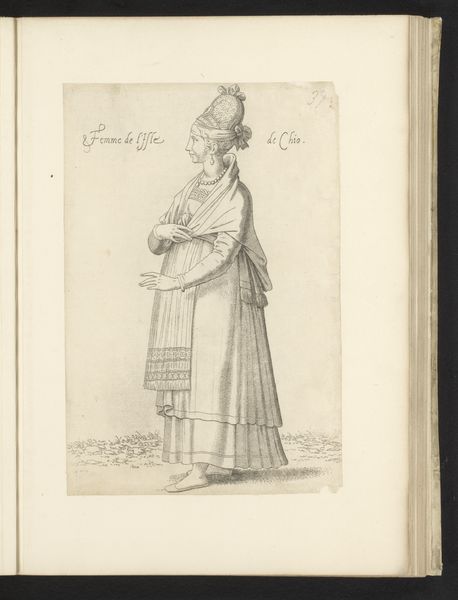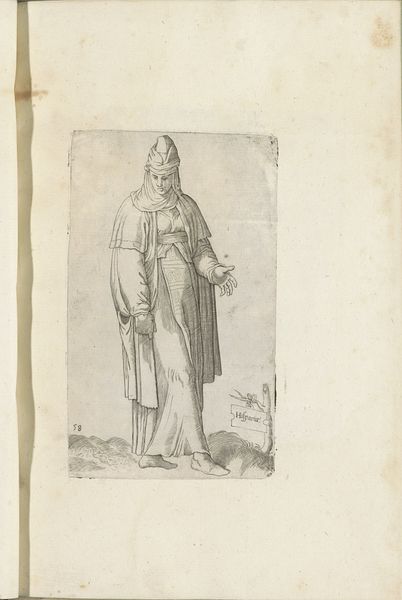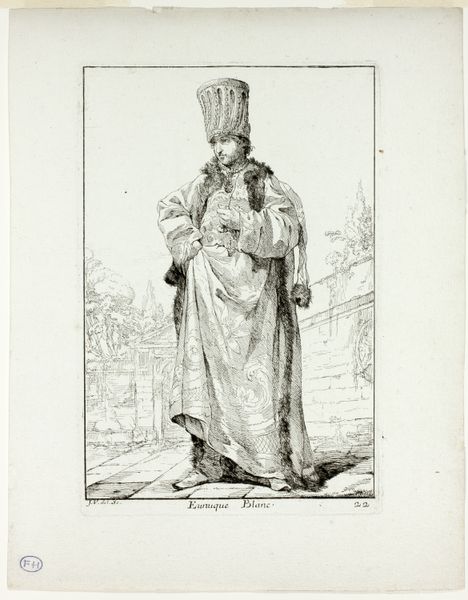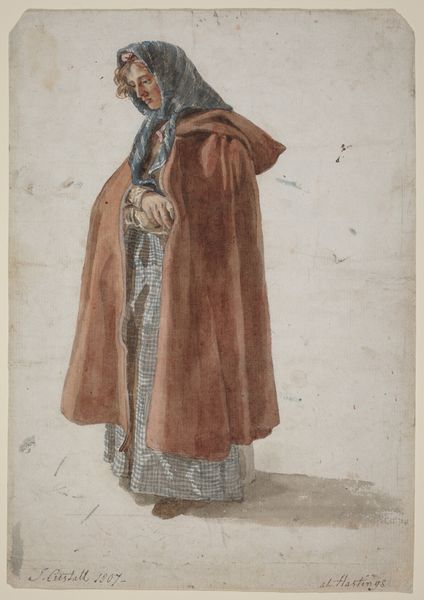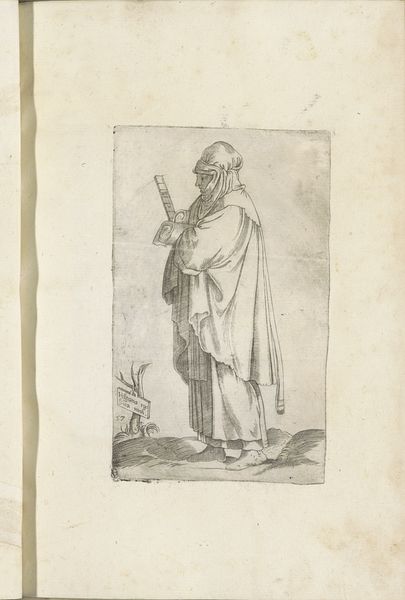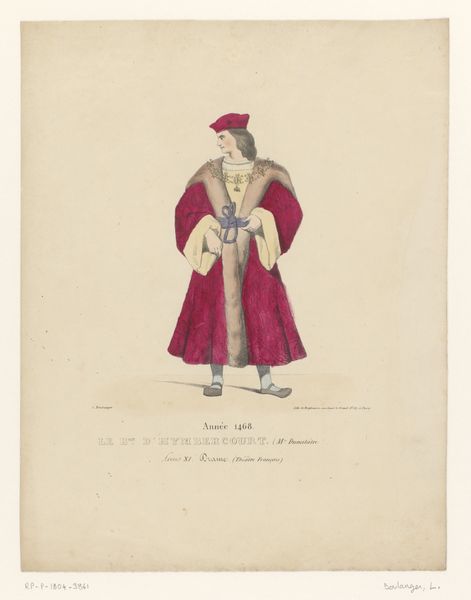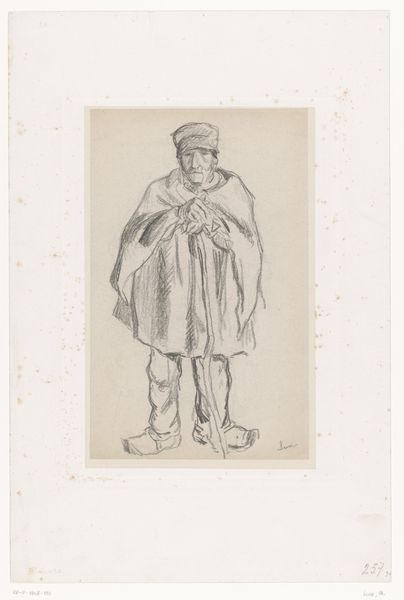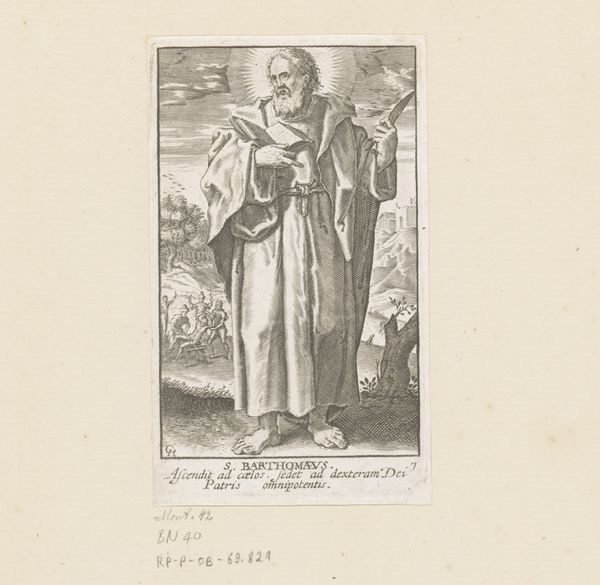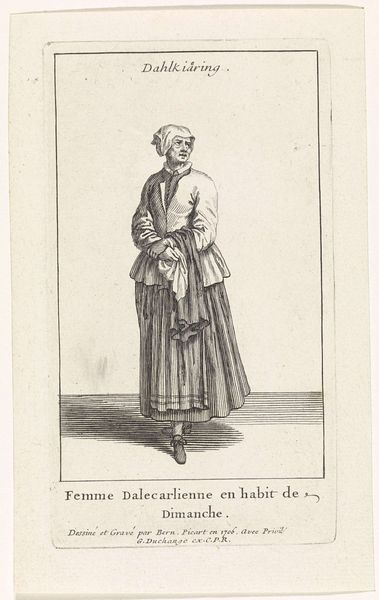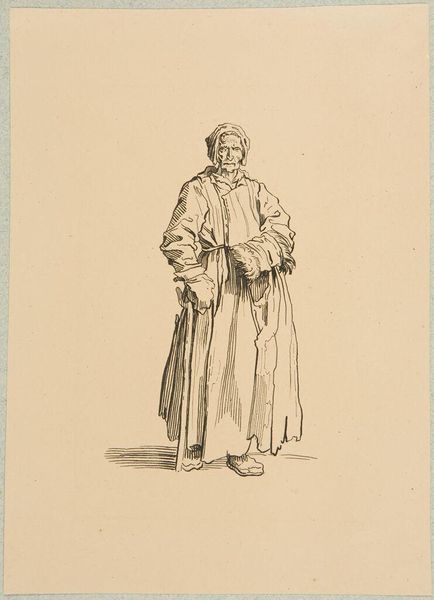
Dimensions: sheet: 8 7/8 x 6 5/8 in. (22.6 x 16.9 cm)
Copyright: Public Domain
Editor: Here we have Jean-Étienne Liotard's "Portrait of Jean-Étienne Liotard," dating from sometime in the 1700s. It's made using watercolor, colored pencil, and print. It gives off an air of exoticism, I think, through the sitter's clothing. How do you interpret this work? Curator: The so-called "exoticism" you point out is precisely where this work's significance lies. How does it performatively reinforce Orientalist fantasies and European hegemony of the period? Liotard himself spent time in the East. To what degree do you feel this portrait, consciously or unconsciously, perpetuates stereotypical and patriarchal visions of non-European identities? Editor: That’s a powerful way to put it. I hadn't thought about the power dynamics at play. I guess I was seeing it more as a document of cultural exchange, but… Curator: Cultural exchange is never neutral; it is always enacted within structures of power. Liotard is clearly playing with representation here. The deliberate "othering" can perhaps be more easily viewed if we ask ourselves whether, by assuming such dress, he’s fetishizing or genuinely honoring the Middle Eastern aesthetic? Where is the line drawn between admiration and appropriation? Editor: I can see that now. It feels less like appreciation and more like…almost a costume. The setting is non-specific; he could be anywhere, really. The emphasis is all on his… performance. Curator: Precisely! Consider how easily it lends itself to projecting Western notions and biases. Can we consider the subject's dress and identity through the prism of gender performance? Or even his identity through the lens of class. Editor: This has given me a lot to think about, especially regarding the context in which art is made and received. Curator: And to critically question the aesthetic and the intent embedded within portraiture as a method of creating visibility in that period, with visibility in art history.
Comments
No comments
Be the first to comment and join the conversation on the ultimate creative platform.
